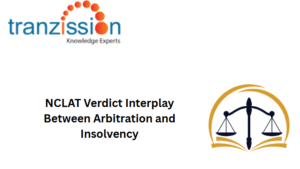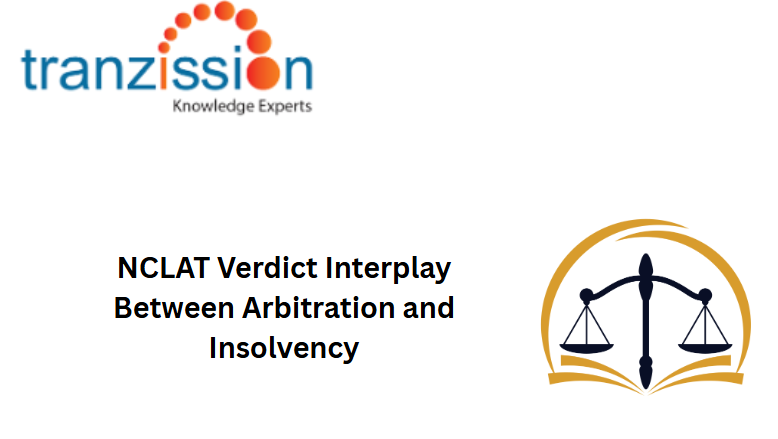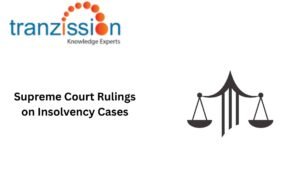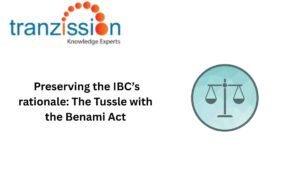
NCLAT Verdict Interplay Between Arbitration and Insolvency

Table of Contents
The National Company Law Appellate Tribunal (NCLAT), Chennai Bench in KK Ropeways Limited v. Billion Smiles Hospitality has significant implications for the Interplay Between Arbitration and Insolvency. The central question addressed by the NCLAT was whether a petition filed under section 9 of the Insolvency and Bankruptcy Code, 2016 (“the IBC”) for the implementation of an arbitral award is maintainable. This article examines the key legal issues and explores the implications of the verdict in promoting efficiency, discouraging forum shopping, and reinforcing the sanctity of arbitral awards gives an overview on NCLAT Verdict Interplay Between Arbitration and Insolvency
Legal Framework Governing Arbitration and Insolvency
Arbitration and Conciliation Act, 1996:
The Arbitration and Conciliation Act, 1996 (“the Act”) facilitates arbitration through key provisions like mandating arbitration when a valid arbitration agreement exists under section 8. Section 11 provides for the appointment of arbitrators when parties cannot agree on their selection, ensuring that arbitration proceedings can proceed even when parties disagree on the composition of the arbitral award. Section 34 outlines the limited grounds on which an arbitral can be set aside, ensuring that the award is not challenged without a legitimate reason. Further, Section 36 stipulates that arbitral awards are enforceable in the same manner as a court decree, ensuring that the final decision is respected.
Insolvency and Bankruptcy Code, 2016:
The primary objectives of the IBC are to consolidate existing insolvency laws, streamline the resolution process, and promote entrepreneurship. It aims at resolving insolvency and maximizing asset value of the corporate debtor. The moratorium period under section 14 prevents actions that could deplete the corporate debtor’s assets, such as the enforcement of security interests, recovery of property, or transfer of assets. This ensures that the company’s assets are available in the Corporate Insolvency Resolution Process (CIRP). Section 238 of the IBC states an overriding effect of the IBC over other laws.
Judicial Interpretations and Case Analyses
The NCLAT addressed the issue of the maintainability of a petition under section 9 of the IBC based on an arbitral award under challenge in KK Ropeways Ltd. v. Billion Smiles Hospitality Pvt. Ltd. The Tribunal held that the pending challenge under Section 34 of the Arbitration Act indicates an existing dispute, thereby, rendering the IBC petition non-maintainable. This case demonstrates the clean slate theory as successful resolution applicants were not burdened with undecided claims post-resolution.
Key Doctrines and Principles
Existence of Dispute:
Section 5(6) of the IBC defines “dispute” as a suit or arbitration proceedings relating to the existence of the amount of debt, the quality of goods or services, or the breach of a representation or warranty. The presence of a genuine, pre-existing dispute can lead to the dismissal of a CIRP petition. However, not all disputes automatically bar the initiation of the insolvency process, the nature and timing of the dispute.
Clean Slate Doctrine:
This doctrine includes the concept of resolution applicants acquiring the corporate debtor to free them from past liabilities not accounted for in the resolution plan. The clean slate doctrine has been instrumental in achieving the primary objective of the IBC, the revival of the corporate debtor. By ensuring that a resolution applicant takes over a debtor free from past liabilities, the doctrine promotes investor confidence and facilitates effective insolvency resolutions.
Non-Arbitrability Post-Resolution:
Upon approval of a resolution plan by the National Company Law Tribunal (NCLT), all claims not part of the plan are extinguished. This means that no person can initiate or continue any proceedings related to those claims. This ensures the sanctity and conclusiveness of the insolvency process.
Read more : What is rebidding in the resolution process?
Practical Implications for Insolvency Professionals
Due Diligence:
Insolvency professionals (IPs) have the responsibility of assessing existing and potential arbitration proceedings involving the corporate debtor. In such circumstances, they must ensure due diligence in the evaluation of the status of arbitral awards and any pending challenges.
Drafting Resolution Plans:
A viable resolution plan is crucial in reviving the corporate debtor and must explicitly address the treatment of ongoing arbitration claims. Here, IPs should ensure clarity on the extinguishment or continuation of such claims post-resolution.
Stakeholder Communication:
According to the IBC provisions, IPs have a major role in balancing the interests of all stakeholders involved in the resolution process. This includes informing creditors and claimants about the implications of the resolution plan on their arbitration rights. IPs need to manage expectations regarding the finality of claims post-CIRP.
Conclusion: Interplay Between Arbitration and Insolvency
The iInterplay Between Arbitration and Insolvency presents a complex legal challenge. The ruling of the NCLAT underscores that arbitration and insolvency proceedings cannot be conducted simultaneously and that a genuine dispute exists between the parties involved in the debt prevents the initiation of the CIRP. This landmark judgement emphasizes the need for clarity and finality in insolvency resolutions. It ensures a more efficient and effective resolution of disputes related to debt and insolvency, promoting the sanctity of arbitral awards and encouraging parties to act in good faith during the arbitration process. Parties engaged in Interplay Between Arbitration and Insolvency matters must be mindful of these rulings to avoid procedural hurdles and achieve a timely resolution of their disputes.





